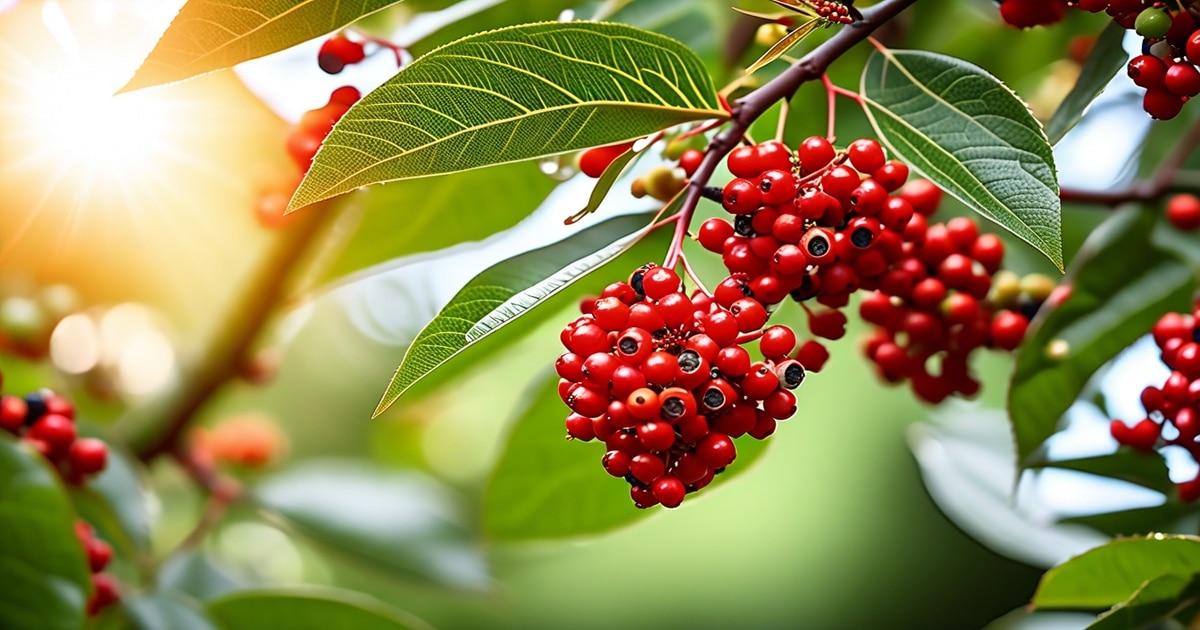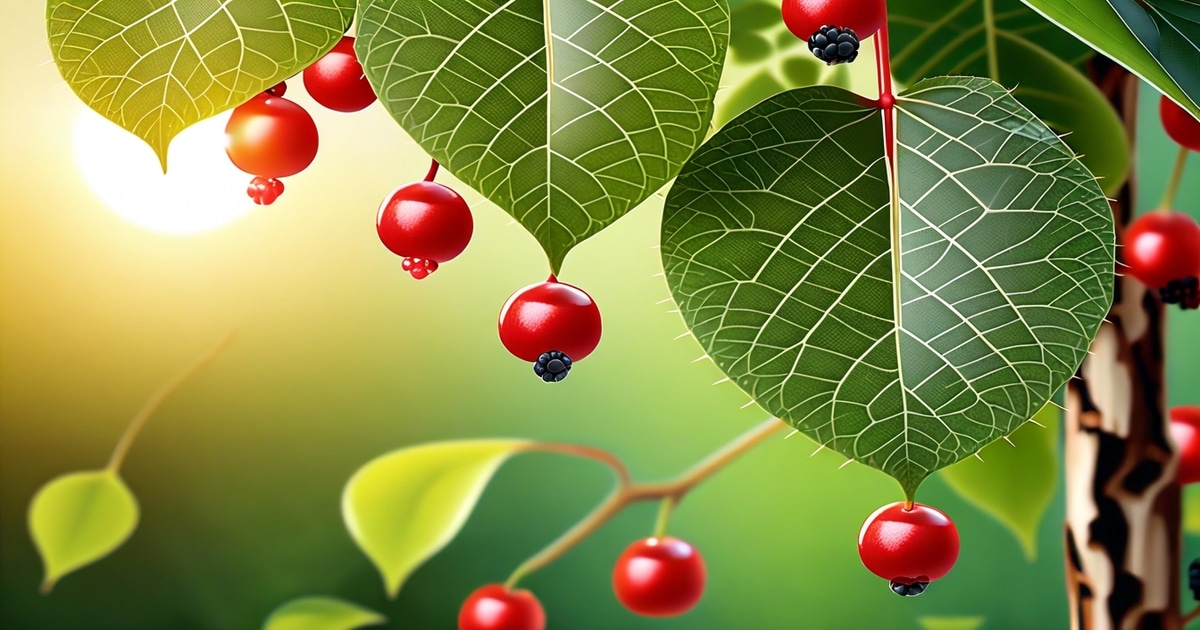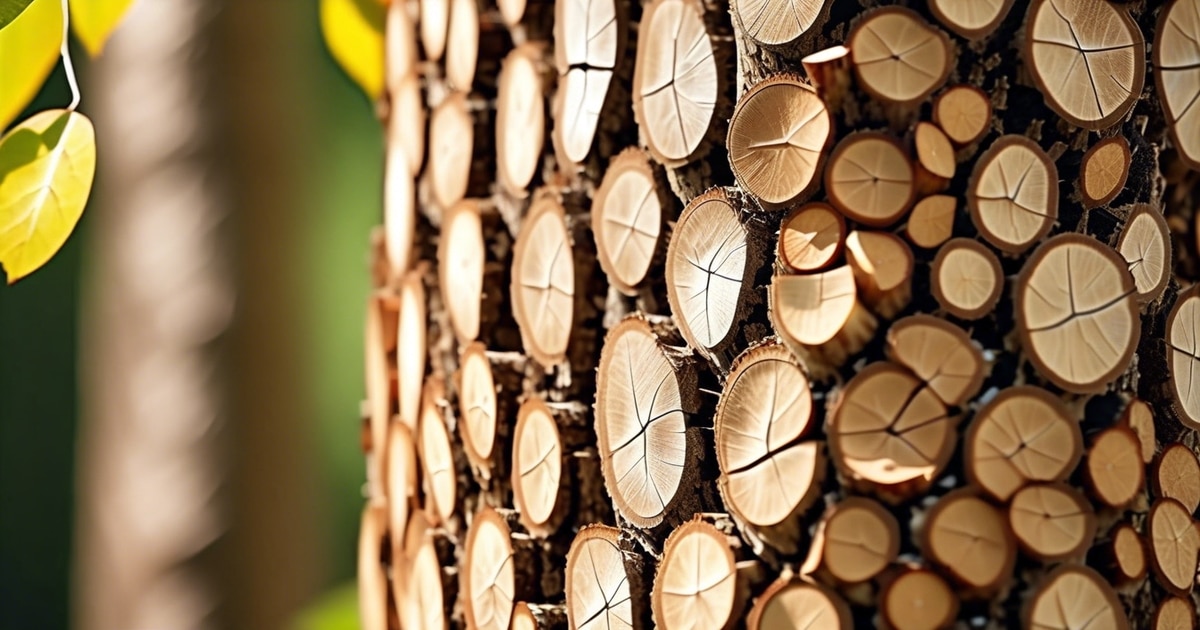Key Takeaways
- Consider Prickly Ash Benefits: Prickly ash bark, an herbal medicine, offers traditional health benefits such as aiding digestion and relieving toothaches and joint pain.
- Use Prickly Ash Cautiously: While prickly ash, a circulatory stimulant plant, can support cardiovascular health and alleviate pain, it’s essential to be aware of precautions, potential side effects, and medication interactions.
- Please consult a Healthcare Provider: Before incorporating prickly ash, a new holistic herbal plant, into your wellness routine, please consult a healthcare provider to determine the appropriate dosage and make sure it aligns with your health needs.
- Quality Matters: When selecting prickly ash products (plant), prioritize high-quality sources to maximize the potential benefits and minimize the risk of contaminants.
- Monitor Effects: Keep track of how your body responds to prickly ash usage, noting any changes or adverse reactions to adjust the dosage or discontinue use if necessary.
- You can stay informed about the latest research on prickly ash bark to make informed decisions about its use for your health and well-being.
- So, what’s the story, ash bark vs prickly ash bark!
Prickly Ash Overview
Traditional Uses
Prickly ash, a native North American deciduous tree, has been utilized in traditional medicine for centuries. The bark and berries of the prickly ash tree are known for their medicinal properties. For example, the bark often alleviates toothaches due to its numbing effect when chewed.- Pros: Natural remedy with historical use.
- Cons: Limited scientific evidence on efficacy.
Other Names
Apart from being referred to as prickly ash or prickly ash bark, this tree is also known by other names such as northern prickly ash and toothache tree. These alternative names reflect the plant’s characteristics or historical uses.- Key Information:
- Prickly Ash Bark: Used traditionally for toothaches.
- Toothache Tree: Reflects its application in alleviating dental pain.
Traditional Health Benefits of Prickly Ash

Digestive Aid
Prickly ash bark, a common ingredient in traditional medicine, is known for stimulating digestion and enhancing appetite. It has been used for centuries to alleviate issues like indigestion, bloating, and flatulence. The bark’s properties can help soothe the stomach and promote better digestion. Prickly ash’s effectiveness as a digestive aid lies in its ability to increase gastric secretions, which aids in breaking down food more efficiently. Promoting healthy digestion can reduce discomfort associated with common digestive problems such as bloating or gas.Pain Relief
In addition to its digestive benefits, prickly ash is also believed to be effective in managing certain types of pain. Traditionally used for rheumatic conditions and joint pain relief, this natural remedy may relieve discomfort associated with arthritis or other inflammatory conditions affecting the joints.- Pros:
- Natural remedy
- Supports healthy digestion
- Alleviates joint pain
- Cons:
- Limited scientific studies
- Potential interactions with medications
Prickly Ash Medicinal Uses
Active Compounds
Prickly ash bark is prized for its medicinal properties due to the presence of potent compounds like alkaloids and volatile oils. These active components are responsible for the bark’s therapeutic effects, making it a valuable ingredient in herbal remedies. Prickly ash’s alkaloids and volatile oils work synergistically for various health benefits. Alkaloids, such as chelerythrine, exhibit anti-inflammatory properties, while volatile oils contribute to its warming sensation when applied topically or consumed in teas or tinctures.Preparation Methods
The versatility of prickly ash allows it to be incorporated into different forms for medicinal purposes. It can be prepared as a tincture, which involves extracting the beneficial compounds using alcohol or glycerin. Brewing prickly ash bark as a tea enables easy consumption of its healing properties through infusion.- Prickly ash bark can also be used topically by infusing it into an ointment for skin conditions.
- The diverse preparation methods make incorporating prickly ash into daily wellness routines convenient.
Prickly Ash for Cardiovascular Support
Potential Benefits of Prickly Ash Bark
Prickly ash bark, a new holistic herbal supplement, shows promise in supporting cardiovascular health. Studies suggest it acts as a circulatory stimulant, aiding in better blood circulation and potentially lowering high blood pressure. Research also hints at its ability to maintain healthy cholesterol levels.- Supports cardiovascular health
- Improves blood circulation
- It may reduce high blood pressure.
Differentiating Prickly Ash Bark from Regular Ash Bark
While both types of bark have medicinal properties, prickly ash bark specifically targets cardiovascular support. It stands out due to its potential benefits on heart health, unlike regular ash bark, which may not offer the same circulatory advantages.- Pros of Prickly Ash:
- Enhances blood flow
- Supports healthy cholesterol levels
- Cons of Regular Ash:
- May lack specific cardiovascular benefits
Prickly Ash for Pain Relief and Oral Issues

Pain Relief
Prickly ash bark is known for its analgesic properties, effectively treating various types of pain, including toothaches. This natural remedy can be applied topically to help with muscle and joint pain, offering relief without synthetic medications. Prickly ash’s ability to alleviate pain extends beyond toothaches; it can also benefit individuals suffering from arthritis or other joint pain. By incorporating prickly ash into herbal remedies or tinctures, one can experience relief from discomfort associated with these ailments.Oral Issues
In addition to its analgesic properties, prickly ash bark has been traditionally used to address oral health concerns such as gum infections and sore throats. Some eclectic medical publications have highlighted the benefits of using prickly ash as a mouthwash to combat inflammation and promote overall oral health.- Pros:
- Natural analgesic properties
- Versatile application for different types of pain
- A traditional remedy for oral health issues
Side Effects and Interactions of Prickly Ash
Allergic Reactions
Prickly ash, like many herbal remedies, can trigger allergic reactions in some people. Symptoms may include skin rashes, itching, or difficulty breathing. Before using prickly ash, it’s crucial to be aware of any potential allergies.Precautions and Consultation
High doses of prickly ash could result in gastrointestinal upset, such as nausea or diarrhea. In some cases, skin irritation might occur upon contact with the bark. To avoid these issues, starting with a small dose and gradually increasing intake if well-tolerated is recommended. I think consulting a healthcare professional is essential before incorporating prickly ash into your routine, especially if you are on other medications.- Pros:
- Natural remedy for various conditions.
- It may provide pain relief and aid oral health.
- Cons:
- Potential allergic reactions.
- High doses may cause gastrointestinal upset.
Dosage Recommendations for Prickly Ash Bark
Individual Variability
The dosage of prickly ash bark varies based on the person and condition being treated. It is crucial to consider individual differences. Prickly ash bark dosage should be approached cautiously, starting with a low amount. Gradually increasing the intake allows for better tolerance and reduced risk of adverse effects. This method ensures safety while maximizing potential benefits.Expert Consultation
Consulting with a qualified professional like an herbalist or healthcare provider is essential in determining the appropriate dosage. Their expertise helps tailor the dose to an individual’s specific needs.- Varies depending on individual and condition
- Start with a low dose and increase gradually.
- Consult with an herbalist or healthcare provider for accurate dosage determination.
What to Look For in Prickly Ash Products
Reputable Brands
Opt for well-known brands that prioritize responsible ingredient sourcing when purchasing prickly ash products. This ensures the quality and authenticity of the product, giving you confidence in what you’re buying. Please look for labels or information indicating where the product‘s prickly ash bark is sourced, such as sustainable farms or ethical wildcrafting practices. These details can give insight into the brand’s commitment to high-quality products.Pure Ingredients
Check that the product contains only pure prickly ash bark without additives or fillers. Avoid products with unnecessary ingredients that may dilute the effectiveness of the prickly ash bark extract. Choosing a product with minimal additional components ensures you get the full benefits of prickly ash bark without interference from potentially harmful substances.Closing Thoughts
You’ve delved into the world of prickly ash bark, uncovering its traditional uses, medicinal benefits, and potential side effects. From cardiovascular support to pain relief, this spiky wonder has much to offer in natural remedies. Always consult with a healthcare professional before adding new supplements to your routine. Consider dosage recommendations and product quality when incorporating prickly ash bark into your wellness regimen. Now armed with knowledge about this potent botanical ally, you can make informed choices for your health journey. Explore the power of prickly ash bark and see how it can enhance your well-being naturally. Your health is your wealth, so why not tap into the gifts nature provides? Start small, listen to your body, and let the magic of prickly ash bark work its wonders. Embrace the holistic approach to health and discover the benefits waiting for you in herbal remedies.Frequently Asked Questions
Is prickly ash bark different from ash bark?
Yes, prickly ash bark and regular ash bark come from different plants. Prickly ash comes from the Zanthoxylum americanum tree, while regular ash bark typically refers to the bark of trees in the Fraxinus genus.What are some traditional health benefits of prickly ash?
Prickly ash has been traditionally used for digestive issues, circulation improvement, and pain relief. It is also believed to have anti-inflammatory properties and may support oral health.How can prickly ash be used medicinally?
Prickly ash can be consumed in various forms, such as teas, tinctures, or capsules. Its medicinal uses include aiding digestion, improving blood circulation, and relieving pain like toothaches or joint discomfort.What Are the Potential Side Effects of Using Ash Bark for Medicinal Purposes?
When using ash bark for medicinal purposes, it’s important to be aware of the potential side effects of ash bark. Some people may experience an allergic reaction, stomach upset, or liver damage. It’s crucial to consult with a healthcare professional before using ash bark as a remedy.

